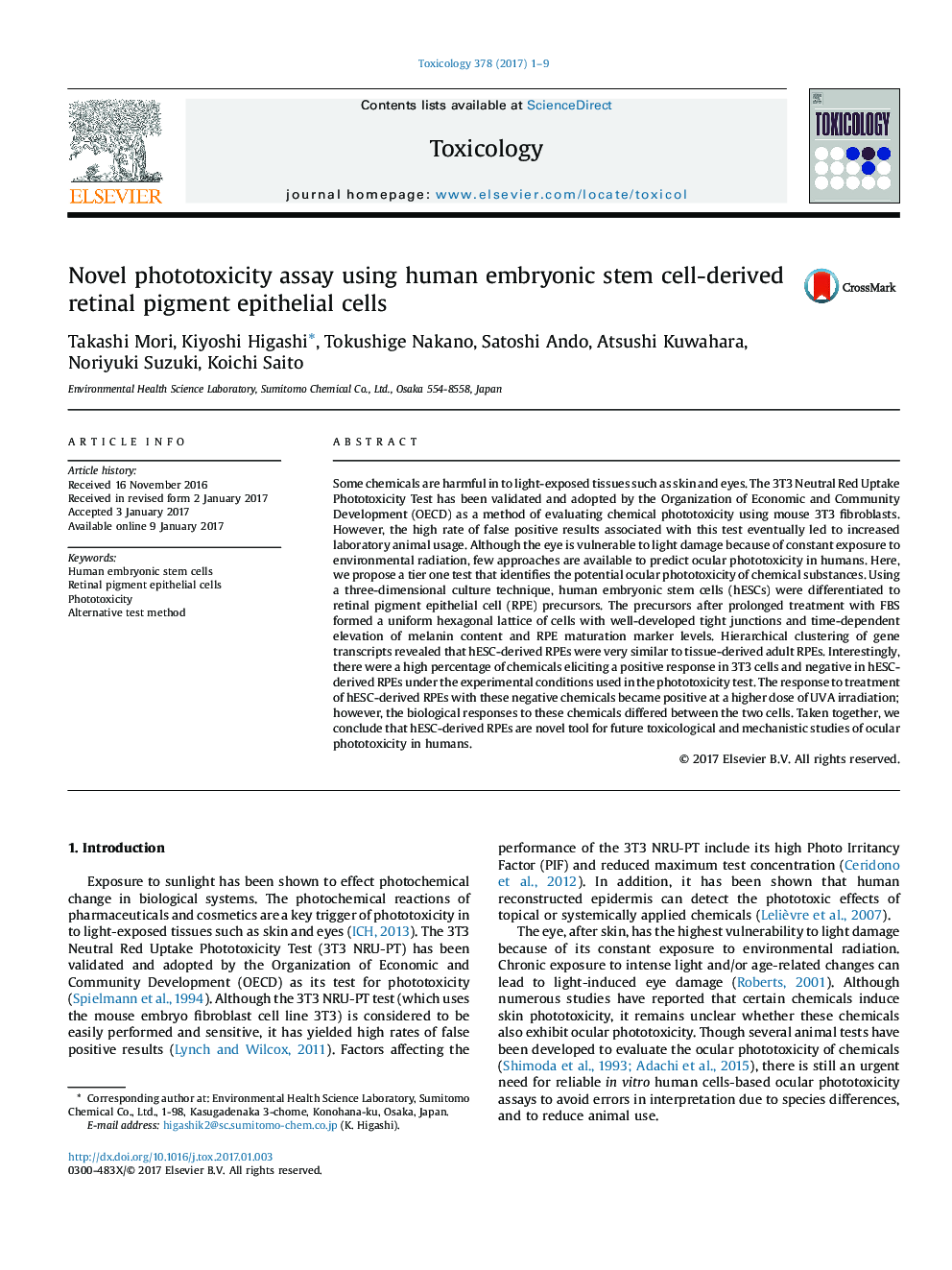| Article ID | Journal | Published Year | Pages | File Type |
|---|---|---|---|---|
| 5561860 | Toxicology | 2017 | 9 Pages |
Abstract
Some chemicals are harmful in to light-exposed tissues such as skin and eyes. The 3T3 Neutral Red Uptake Phototoxicity Test has been validated and adopted by the Organization of Economic and Community Development (OECD) as a method of evaluating chemical phototoxicity using mouse 3T3 fibroblasts. However, the high rate of false positive results associated with this test eventually led to increased laboratory animal usage. Although the eye is vulnerable to light damage because of constant exposure to environmental radiation, few approaches are available to predict ocular phototoxicity in humans. Here, we propose a tier one test that identifies the potential ocular phototoxicity of chemical substances. Using a three-dimensional culture technique, human embryonic stem cells (hESCs) were differentiated to retinal pigment epithelial cell (RPE) precursors. The precursors after prolonged treatment with FBS formed a uniform hexagonal lattice of cells with well-developed tight junctions and time-dependent elevation of melanin content and RPE maturation marker levels. Hierarchical clustering of gene transcripts revealed that hESC-derived RPEs were very similar to tissue-derived adult RPEs. Interestingly, there were a high percentage of chemicals eliciting a positive response in 3T3 cells and negative in hESC-derived RPEs under the experimental conditions used in the phototoxicity test. The response to treatment of hESC-derived RPEs with these negative chemicals became positive at a higher dose of UVA irradiation; however, the biological responses to these chemicals differed between the two cells. Taken together, we conclude that hESC-derived RPEs are novel tool for future toxicological and mechanistic studies of ocular phototoxicity in humans.
Keywords
Related Topics
Life Sciences
Environmental Science
Health, Toxicology and Mutagenesis
Authors
Takashi Mori, Kiyoshi Higashi, Tokushige Nakano, Satoshi Ando, Atsushi Kuwahara, Noriyuki Suzuki, Koichi Saito,
